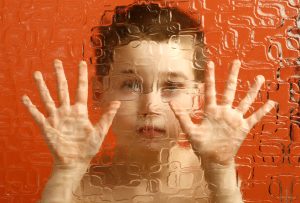What Causes Autism?
What causes autism?* The short answer is no one knows. It’s such a complicated disorder examining causal factors is also complicated. However, just because it’s complicated doesn’t mean we should stop researching nor does it mean we should stop asking questions.
Autism affects 1 out of every 68 children according to the Centers for Disease Control (CDC). Autism prevalence increased 119% between 2000 (1 in 150) and 2010 (1 in 68).
So, what causes autism? Many scientists have issue with the meaning of cause. The scientists feel they cannot look at direct cause and effect, and feel it is more accurate approach is to look at what conditions increase autism risk.
There are many theories leading to lots of questions:
Age of Parents
An extensive autism risk study released in 2015 segregates the ages of both the mothers and the fathers for the first time. The study involves the health records of 5.7 million children in five different countries – Denmark, Israel, Norway, Sweden and Western Australia.
The autism risk rates are as follows (compared with those in their 20’s):
- 66% higher with fathers 50+ years old
- 28% higher with fathers 40+ years old
- 15% higher with mothers 40+ years old
- 18% higher with teen moms
Risk also rises when both parents are older or there is a 10+ year gap between the ages of parents, particularly when fathers are between 35 and 44 or mothers are in their 30’s and the partners are 10+ years younger.
Birthing Method
There is one study stating cesarean sections may contribute to autism risk as the baby’s brain function is enhanced through the birth canal and by cranial molding. The study from the Irish Centre for Fetal and Neonatal Translational Research (INFANT) in Cork, Ireland examines the relationship between modes of delivery (specifically birth by cesarean section) on ASD using data from the Swedish registry for live births from 1982–2010.
The study includes close to 2.7 million children, 80.1% of whom were born by unassisted vaginal delivery, 6.1% by elective cesarean section delivery, 6.5% by emergency cesarean section delivery, and 7.3% by assisted vaginal delivery. One percent of children are diagnosed with ASD, resulting in a 21% increased chance due to c-section. The study insists on the evidence of a control sibling group.
Earlier this year, INFANT stated there is no causal relationship. Again, looking at cause and effect may be going to far, looking at increasing autism risk may be more appropriate. Accordingly, scientists do speculate there may be a link to perinatal factors such as c-sections as these types of births involve exposure to anesthesia drugs, early-term delivery and increased stress response in emergency situations.
Diagnosis & Testing Ability
Many claim advanced diagnosis methods and tools lead to the increase in autism cases. This may explain the 30% increase from 2012 than previously estimated, however, it does not account for the increases seen over the last decade.
Environmental Toxins
There have been many studies researching the potential link between environmental toxins and increase of autism risk. Here are a few:
March 2014 – As Autism Speaks summarizes, a 100 medical records review notes toxic effects of lead and chemicals that mimic hormones – boys with autism are 6 times more likely than other boys to have genital malformations. This study warrants follow-up research to investigate the role of environmental exposures and gene-environment interactions in autism.
April 2014 – Dr. Mercola states thirty years ago, autism affected one in 10,000 children, now its 1 in 68, so looking at mounting research and using common sense is critical. The Harvard School of Public Health and the School of Medicine at Mount Sinai identify 11 brain-harming culprits:
- Arsenic in flouride water, wood preservatives and pesticides
- Bisphenol-A (BPA) in plastic products
- Chloropyrifos in insecticide
- Dichlorodiphnyltrichl oroethane (DDT) in pesticide banned in 1972, but still in food chain
- Ethanol
- Flouride in tap water, some antibiotics, tea, processed foods and drinks
- Lead in processed chocolate, gasoline, paint, toys, batteries, pipes, pottery, roofing materials, and cosmetics
- Manganese in drinking water and soy infant formula
- Methylmercury in fish
- Polybrominated diphenyl ethers in flame-retardant chemicals
- Polychlorinated biphenyls (PCBs) farmed fish
- Toluene in paint thinner, fingernail polish, leather tanning
- Tetrachloroethylene (PERC) in dry cleaning fabrics and metal degreasing operations
2012 – Children’s Environmental Health Center (CEHC) at Mount Sinai School of Medicine – “The National Academy of Sciences reports that 3 percent of all neurobehavioral disorders in children, such as autism spectrum disorder (ASD) and Attention Deficit Hyperactivity Disorder (ADHD), are caused by toxic exposures in the environment and that another 25 percent are caused by interactions between environmental factors and genetics. But the precise environmental causes are not yet known.”
A 2006 report from the CDC found that “the average American had 116 of the 148 synthetic compounds tested for, including the infamous dioxin, polycyclic hydrocarbons, and organochlorine pesticides. These same substances were also found in human milk, placental tissue, umbilical cord blood, and the blood and body fat of newborns. The average American home contains 3-10 gallons of hazardous materials, and 85 percent of the chemicals that are registered have never been tested for their impact on the human body. See the Green This! series of books by Deirdre Imus.”- Maureen McDonnell, RN
2005 – Environmental Working Group (EWG) finds blood samples from newborns contained an average of 287 toxins.
Genetics
Studies have found genetics plays between 38 – 50% in the causal relationship of autism risk. Determining how genetics influences this risk requires extensive scientific testing, most notably comparing twins, siblings and availability of family history.
Twins:
If one identical twin has autism spectrum disorder, the other twin has a 76 % chance of also being diagnosed with it, according to one scientific study. The numbers were lower for fraternal twins. The percentage of fraternal twins who each share an ASD diagnosis is 34% for same-sex twins and 18% for boy-girl pairs.
Siblings:
Children who have a sibling with ASD are at a higher risk of also having ASD.
Family History:
According to the Mayo Clinic, families who have one child with ASD have an increased risk of having another child with the disorder. It’s also not uncommon for parents or relatives of a child with ASD to have minor problems with social or communication skills themselves or to engage in certain behaviors typical of ASD.
Scientists are fairly clear there is no one ‘autism gene, so looking at gene families and combinations of genes is important and leads to its complexity.
Looking at gene families, researchers found there are two functional categories, according to a UC San Francisco study in 2015, contributing to autism – 1. development and function of synopsis and 2. chromatin, a DNA protein complex. These may be two sides of the same coin.
This finding results from the largest study ever in this field.
Gestation
In Utero:
Some medicines, when taken during pregnancy, such as the prescription drugs valproic acid and thalidomide have been linked with a higher risk of ASD.
Every pregnant woman should eat a healthy diet, and avoid tobacco and alcohol. Gestational Diabetes and thyroid imbalances may lead to an increase in autism risk.
Gestational Period:
Babies born before 26 weeks of pregnancy may have a greater risk of ASD.
Nutrition
Building up of toxins in the body leads to disruption in gut health, in turn, wreaking physical and neurological havoc. Avoiding processed foods, too many antibiotics, genetically-modified foods and possibly gluten and casein helps ease this toxic build-up.
Other Medical Conditions
Children with certain medical conditions have a higher than normal risk of ASD or ASD-like symptoms. Examples of these conditions include:
- Fragile X syndrome, an inherited disorder that causes intellectual problems;
- tuberous sclerosis, a condition in which benign tumors develop in the brain;
- the neurological disorder Tourette syndrome;
- Rett syndrome, a genetic condition occurring almost exclusively in girls, which causes slowing of head growth, intellectual disability and loss of purposeful hand use.
Sex of Child
Autism is more prevalent in boys versus girls by a ratio of 4:1, meaning boys have four times higher risk for autism than girls.
Vaccination Policy
There is evidence that vaccinations increase autism risk and there is also evidence they do not. However, let’s employ common sense. If a child has a bad reaction to a vaccination, should that child have to continue to have them?
Bad Reactions:
If someone has a bad reaction to strawberries, they shouldn’t eat them. It doesn’t mean strawberries are bad, it just means the person shouldn’t partake. Why is it any different with vaccinations? If someone has a bad reaction, they should not partake.
The bad reaction with strawberries doesn’t have to be life threatening, so a bad reaction with vaccines shouldn’t have to be either.
It should be that simple.
Combinations:
The combination and number of vaccines have increased over the last decade. A child’s health would be adversely affected if experiencing these diseases at the same time. Where are the studies testing these changes in the number and combinations of vaccines?
Studies:
The autism risk linked to vaccine studies are being conducted by the same pharmaceutical companies who sell these vaccines. This is a conflict of interest. At the very least, these studies should be conducted by independent parties.
Timing:
Perhaps the ‘vaccine early and often’ vaccination policy is contributing to the increased risk of autism. It’s worth looking into by an independent party.
Conclusion
Over the last 30 years, autism rates of increased from 1:10,000 to 1:68. This is an increase of phenomenal proportions.
No one knows what causes autism, but looking at the increased risk factors may aid in relieving the conditions for this risk. We need to keep asking questions. We need to keep searching for answers.
Accordingly, there are many ongoing studies. Here are a few:
Autism Speaks currently funds 75+ studies relating to autism.
CDC Study to Explore Early Development (SEED) being conducted for five years from 2016 – 2021. This is the largest study to date looking into the causal factors of autism including genetic, environmental, pregnancy and behavioral factors. This is a multi-year and multi-race study across 6 diverse areas in the United States; Colorado, Georgia, Maryland, Missouri, North Carolina, and Wisconsin.
Utah Autism Project –
- Gene air pollutants and ASD, funded by the state of Utah
- Improving Neuroimaging of Young Children with ASD – Utah Center for Clinical and Translational Science
- Genetic Studies of ASD in High Risk Families, funded by National Institute of Mental Health
- Prenatal Mechanisms and Biomarkers for ASD, funded by Neuroscience Initiative Collaborative Pilot Project Award
* My personal belief system is not pertinent for this article and therefore is not reflected within it.


